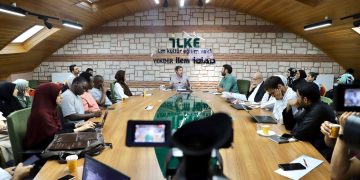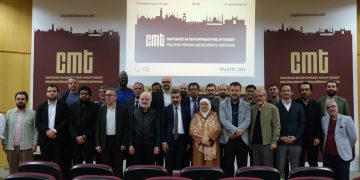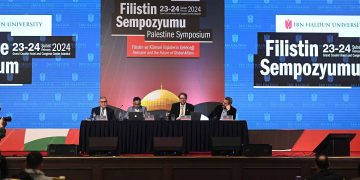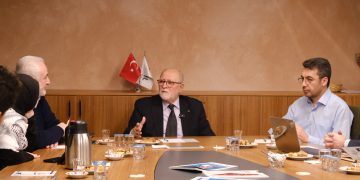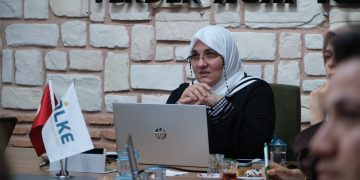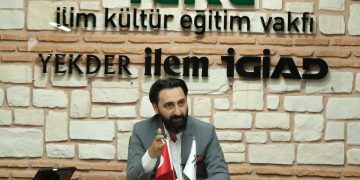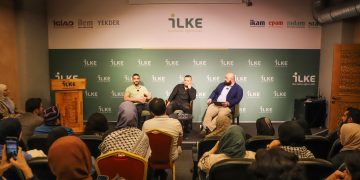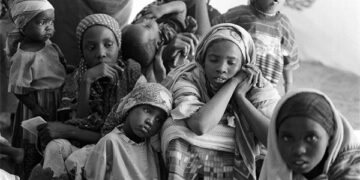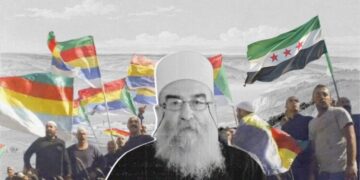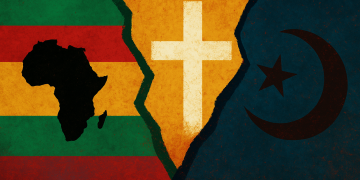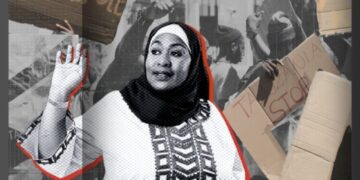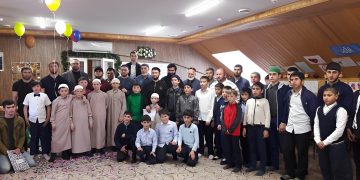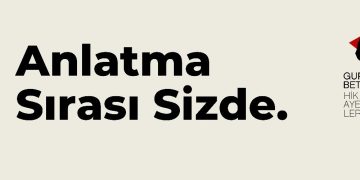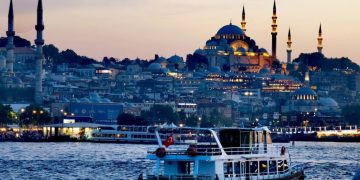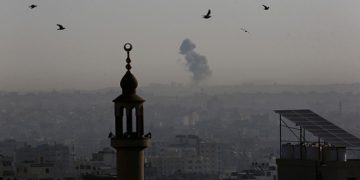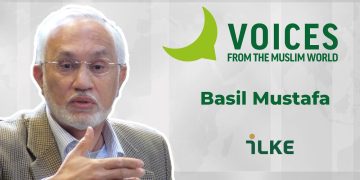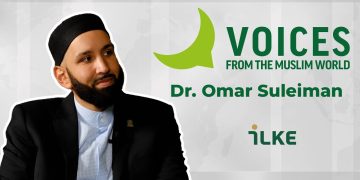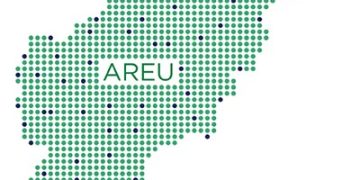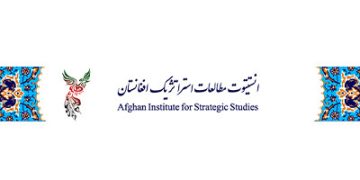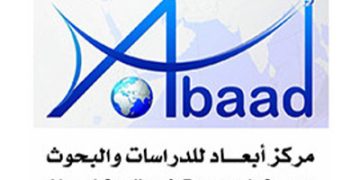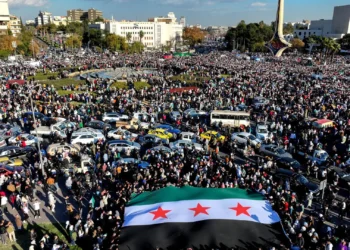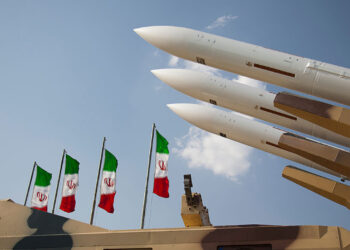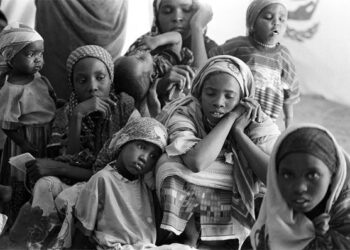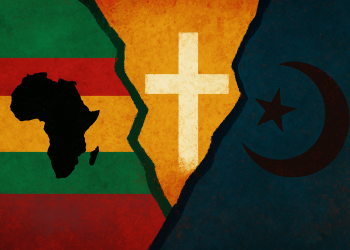In the age of information, where information as a commodity is in circulation, the comparative analysis of the socio-economic conditions of societies is of great importance. In this context, although the development indices developed by international organizations provide information on socioeconomic issues around the world, what these indices prioritize and how they reach the results is worth studying. When it comes to the development issue, the mainstream development indices are found to be relatively insufficient because the perspective offered by indices that are based on Islamic teachings is more comprehensive and includes a range of parameters not included in the conventional indices. Islamic Development Indices, which have been studied extensively in the Southeast Asian region, do not yet have a strong presence in the field. Researchers and academics working on this subject are trying to develop the literature eclectically with a method that supports and improves each other. The aim of this article is to present a general perspective on the Islamic Development Index as a new field and to bring to light the alternative efforts put forward around the concept of human development in the intellectual studies of Muslims.
What is Human Development?
In the 1970s, when the realist paradigm was dominant, development was associated with the economic growth of countries. After the end of the Cold War, with the “victory” of the liberal paradigm, the addition of socio-cultural indicators to the development studies came to the fore besides economic growth. Even though countries achieved economic growth, the fact that no progress was made in diseases, infant mortality and other social issues led to the conclusion that the concept of development needed to be addressed more comprehensively (United Nations, 1990). The United Nations Development Program (UNDP) published its first report, the Human Development Index in 1990. In the report, including the average life expectancy, literacy rate and infant mortality indicators in the index as well as economic growth is an important step in not considering the mere increase in the GDP of countries as development. Because, as Chapra stated, although there was an increase in the incomes of many countries after the Second World War, this development did not positively affect the individual welfare of the people, in fact, there was a decrease in their social welfare level (Chapra, 2008, p. 2).
Although the human development index takes into account other social indicators as well as economic growth, it has been subjected to some criticism. Mc Gillavary, Hicks, Streeten problematize the exclusion of important indicators such as income inequalities, environment, freedom and human rights in the Human Development Index (Anto, 2011, p. 74). In addition to these criticisms, the Human Development Index has been also criticized from an Islamic perspective, and it has been stated that the Human Development Index is insufficient because it focuses only on material realities (Anto, 2011; Aydın, 2000; Batchelor, 2013; Chapra, 2008).
Different aspects of human development: Human development or Islamic Human development
In Islamic understanding, economic development refers to a comprehensive development that will ensure one’s success in the world and the hereafter. In this context, falah appears as a concept that aims to increase the material and spiritual well-being of people on earth regardless of their race, color, age and gender (Chapra, 2008). In Islamic development studies, the concept of falah refers to the development that includes the material and spiritual integrity of humanity based on the Qur’an and Sunnah. In this context, in addition to material development, Islamic development is based on the principle of protecting belief, mind, self, generation and property within the framework of “makasidu’s-shariah” (aims of the shari’a), and aims to ensure the development of these five elements and to achieve prosperity in this world and in the hereafter (Anto, 2011, p.70). In this context, the concept of falah has a framework around the triangle of balance, stability and multidimensionality as an encompassing concept (Anto, 2011, p. 76).
Conventional human development is considered insufficient as it measures only material and physical development and does not give any reference to values. At this point, Islamic development index studies differ from mainstream human development studies primarily in terms of the definition of a human. Considering the multidimensional nature of man, in order to ensure a complete development in light of its Islamic understanding; development studies should include not only material but also moral and spiritual dimensions. Based on the Islamic development perspective, conventional development has been criticized in terms of anthropological and teleological aspects because the concept of development is simplified, examined one-dimensionally and measured with limited indicators (Aydın, 2017).
The differences between mainstream development studies and Islamic development lie in their aims, epistemological grounds, principles and philosophy (Uthman, Abbas, & Oloso, 2011, p.21). According to Aydın, who approaches the concept of Islamic development more pragmatically, the aim is not to create a new understanding with Islamic development, but to complete the deficiencies of mainstream development studies by adding moral and spiritual indicators to the conventional ones (Aydın, 2017). Although it has a developing literature, different indices are created by using various indicators in the Islamic development literature according to which the Islamic development levels of Muslim countries have been measured.
Islamic Development Index
Studies on Islamic development seem to be concentrated in Saudi Arabia, Indonesia and Malaysia. In these countries, institutions such as the Islamic Research and Training Institute (IRTI) and Islamic Development Bank (IsDB) play an active role in the creation of the Maqasid al-Sharia Index (Rama and Yusuf 2019, 201). While Sarkawi (2017) and Muhammad Hashim Kamali broke new ground in their Islamic Development Index studies, Umer Chapra, Henrie Onto and Necati Aydın contribute to the development of Islamic development index studies by producing new indicators and methods.
The Islamic Development Index is formed on the basis of the Purposes of the Qur’an, the principle of Tawhid, the Islamic Economy and the Purposes of Islam (Aydın, 2017, p. 1565). While the principle of the Maqasıd of the Qur’an includes tawhid, prophethood, the hereafter and justice, the principle of tawhid offers ontological, epistemological, anthropological and teleological principles. While Hendrie Anto developed an Islamic Development Index based on national development indices, H. Hasan and Salman Ali developed an index based on Sharia compliance using individual-scale surveys (Hasan and Ali 2018). The five parameters in the Islamic development index developed by H. Hasan and Salman Ali include fulfilling the requirements of Islam and worship in the context of the protection of religion; life expectancy and food security in the context of protection of life; child mortality rates, homicide crime rates, environmental security within the framework of lineage protection; primary, secondary and high school education in the sense of protecting the mind; and security of property in the context of protection of mind (Hasan and Ali 2018). Rama and Yusuf further developed the scope of the indicators of the Islamic Development Index and identified fourteen indicators. In the calculation made with the data series in which the data of each indicator is collected, the development coefficients of the local units of Indonesia were calculated (Rama and Yusuf, 2019, p.49).
When all these indicators are taken into account and the situation of Muslim countries is examined comparatively, Malaysia, which ranks first among Muslim countries in the Human Development Index, ranks third in the Islamic Development Index. Indonesia, which ranks first in the Islamic Development Index, ranks sixth in the UN Human Development Index. Nigeria and Senegal have the lowest scores in the ranking, which includes Malaysia, Lebanon, Türkiye, Jordan, Tunisia, Indonesia, Egypt, Pakistan, Nigeria and Senegal. When the Islamic human development indexes of Muslim countries are examined, it is seen that they are not successful in applying moral principles in the management of public resources. While religious life shows its effect in personal life, this effect decreases in the public sphere (Aydın, 2016).
A Different View of Development: The Islamic Wellbeing Index
In addition to the Islamic development index studies that underline the material and spiritual dimensions of human development, the Islamic Wellbeing Index, which measures the well-being of individuals in Islamic terms, has been developed (Aydin, 2017; Batchelor, 2013). Since faith and good deeds are important in terms of ensuring the spiritual happiness of Muslims, the Islamic Well-Being Index measures the extent to which the requirements of Islam are fulfilled.
According to Batchelor, creating an Islamic Well-Being Index is important in terms of identifying the country that can be a role model when evaluated in a national context, and providing criteria that can guide the policies that states will implement to increase the well-being of their citizens (Batchelor, 2021, p.192). Since the performance of the ruler in Islamic political thought is evaluated with the welfare of the governed, the Islamic Well-Being Index also gives an idea about the managers and the nature of the policies implemented.
Based on the Pew Research Center, Transparency International, United Nations, and World Bank data, the index created by Batchelor with a semi-quantitative method has five indicators: secondary school education, good treatment to women, child care, income distribution and corruption rate. The Islamic development index, which includes physical, mental, spiritual, moral and social dimensions developed by Aydın based on Tawhidi anthropology, includes indicators of spirituality, corruption, morality, sociability, freedom and security in addition to health, education and income indicators (Aydın, 2017).
According to the results of the research, the region with the highest religiosity rates is West Africa, the second is Southeast Asia, and the last is Central Asia and Eastern Europe. Looking at the social relations indicators, the Gulf countries are in the first place, followed by the Southeast Asian countries. While West Africa, where the rate of religiosity is highest, is at the bottom of the social relations indicators, it can be concluded that oil wealth is spent for the social welfare of the people in the Gulf region, where income inequality is the lowest (Batchelor, 2021, p. 206). The reason why Afghanistan, as the country with the highest rate of religiosity, fails in social relations indicators, especially on the scale of corruption, is the political instability brought about by the war that has been going on in the country for more than thirty years. According to the index results, Malaysia (7.5) and Indonesia (7.3) are at the top level in both indicators. Malaysia is seen as a role model among Muslim countries with its comprehensive development strategies (Batchelor, 2021. P. 209). According to the index, the reason for the high rate of well-being in countries such as Afghanistan (6.6), Palestine (6.7) and Iraq (6.0) where conflicts continue, surprisingly, is not due to social indicators, but to the existence of strong moral resistance against conflicts, as indicated by the high rates of religiosity.
Conclusion
The concept of falah, which is at the center of the development issue in Islamic thought in terms of providing material and spiritual well-being, is not taken into account in mainstream development studies. As an area with various deficiencies, Islamic Development Indices still are new in literature and are continually developing. Due to the multidimensional approach of the concept of Islamic development, the inclusion of elements that cannot be measured quantitatively, such as freedom, religiosity, family values, in the index leads to some difficulties. However, the main point emphasized by the Islamic development indices is the multidimensional nature of the human being and therefore the concept of development in this context. In this respect, the Islamic Well-Being Indices aim to develop alternative approaches by looking at development studies from a different point of view. Looking at the results of the indices, West African countries rank first in religiosity rates. In terms of social relations, Gulf countries come to the fore. However, as a result of the ratio of all indicators in terms of material and spiritual well being, Indonesia and Malaysia in the Southeast Asian region are in the first place in the Islamic development index.
References
Anto, MB Hendrie. (2011). Introducing an Islamic human development Iindex (IHDI) to measure development in OIC countries. Islamic Economic Studies, 19(2), 69-95.
Aydın, M. (2000). Determinants of Turkish foreign policy: Changing patterns and conjuctures during the cold war. Middle Eastern Studies 36, 103-39.
Aydın, N. (2017). Islamic vs conventional Human Development Index: empirical evidence from ten Muslim countries. International Journal of Social Economics 44(12),1562-83. doi: 10.1108/IJSE-03-2016-0091.
Batchelor, D. (2013). A new Islamic rating index of well-being for Muslim countries. Islam and Civilisational Renewal (4):188-214. doi: 10.12816/0009740.
Batchelor, D. (2021). “An enhanced Islamic Index of Well-Being (IWI 2.0-2021) for Muslim Countries”. Islam and Civilisational Renewal 12(12). doi: 10.52282/icr.v12i2.850.
Chapra, M.U. (2008). The Islamic vision of development in the light of maqāsid al-shari‘ah. Cidde: Islamic Development Bank.
Hasan, H., ve Salman, A. (2018). Measuring deprivation from maqāsid al-shariah dimensions in OIC countries: Ranking and policy focus. Journal of King Abdulaziz University, Islamic Economics 31(1),3-26.
United Nations. (1990). Human Development Report 1990.
Rama, A. & Burhanuddin Y. (20199. Construction of Islamic human development index. JKAU: Islamic Economics 32(1):43-64. doi: 10.4197/Islec. 32-1.3.
Uthman, I. O., Abbas, L. O., Oloso, K. K. (2011). Contributions of Islamic scholars to sustainable human and environmental development: Islam Hadhari and future development of Muslim countries. Int. J. Arab Culture Management and Sustainable Development 2(1),17-29.

